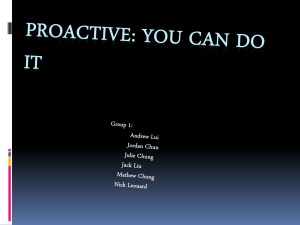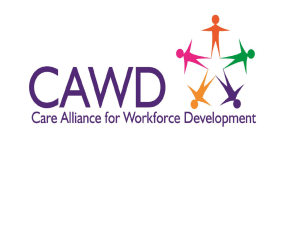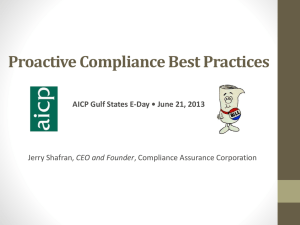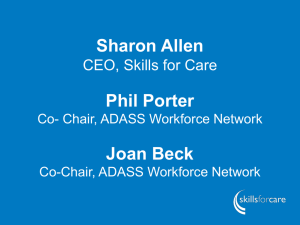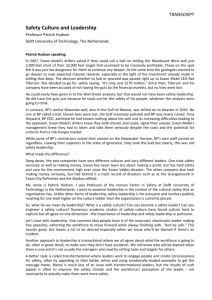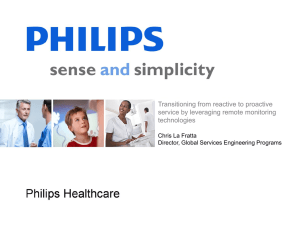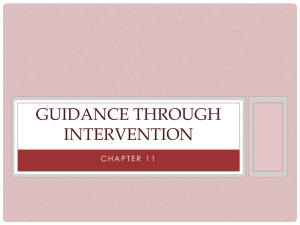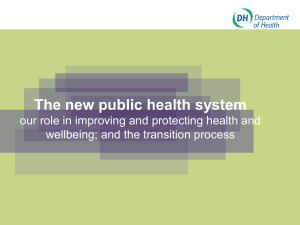A positive and proactive workforce
advertisement
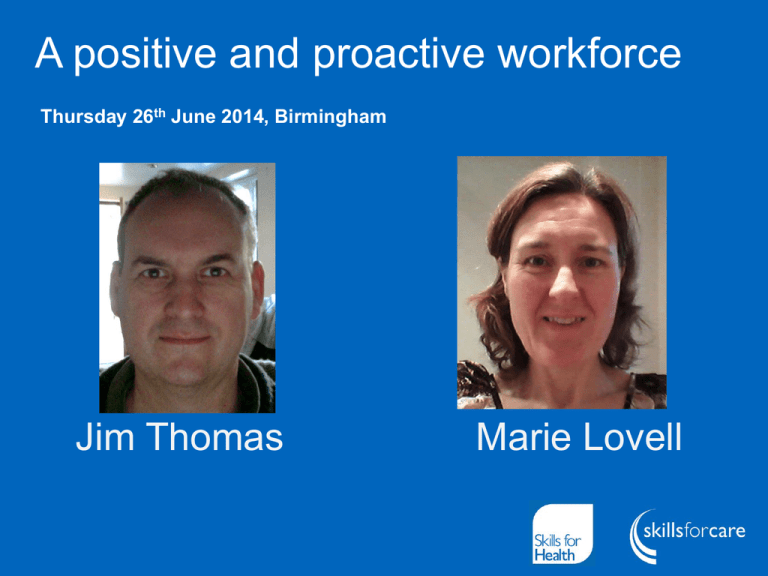
A positive and proactive workforce Thursday 26th June 2014, Birmingham Jim Thomas Marie Lovell Positive and proactive care, & A positive and proactive workforce All of social care and health A positive and proactive workforce – SFC & SFH, part of the picture Skills for Care – NHS Protect – Mental Health Crisis Care Concordat – NHS England and LGA Core Principles Commissioning Tool (for services for people who display behaviour that challenges) – NICE – Mental Health Act Code of Practice Page 8 Current on-going work, allied projects and future products Deaths in The Positive and Safe programme Ministry of Justice Safer custody: NHS care in prison Care Bill 2014 Everyone RCN members’ forum Care Quality Commission Restraint Free Futures NICE Guideline due 2014 / 15 Violence & Aggression Custody High level principles People in secure settings Health Education England A place I call home. Winterbourne View Joint Improvement Programme People with mental health problems Royal College of Psychiatrists NHS England 1. Physical restraint as a patient safety incident 2. Reporting NRLS Safety Board 3. Mental Health Expert Working group to consider whether physical restraint will be a priority Children and young people Independent restraint advisory panel People who have a learning disability / autism NICE Guideline due 2014 / People with dementia People in acute health crisis DH (due 14 / 15) Positive and Proactive: guidance on support and care of children and young people Safewards; making psychiatric wards more peaceful places 15, Challenging Behaviour & Learning Disability Review of the Mental Health Act 1983 / 2008 Code of Practice. Mental Health Crisis Care Concordat More than just ‘restraint’ Page 12 Key Questions Is there a real risk of serious harm to the individual or someone else? Does the person have the mental capacity to make this decision themselves? Is the person detained under the mental health act? Is this a planned restriction as part of a care plan? has every effort been make to help them decide ? Is the restriction necessary for their treatment? Is a restriction in their best interests? does the restriction need to be carried out now? Is this the least restrictive option? Pages 15 and 16 A positive and proactive workforce Developing workers to minimise all restrictive practices. Who is ‘the workforce? What do they do? where? When? What skills knowledge, attitudes do they need? And what do they already have? When and how can we develop the skills that are needed? Restrictions difficulties Five steps to Mental Wellbeing 1. 2. Connect with family, friends, colleagues and neighbours. Be active – Take a walk, go cycling. Find the activity that you enjoy and make it a part of your life. 3. Keep learning – learning new skills can give you a sense of achievement and a new confidence. So why not a cooking course, learning to play a musical instrument, or to fix your bike? 4. Give to others – even the smallest act can count; a thank you or a kind word. Or volunteering at a community centre. 5. Take notice – be more aware of the present moment; feelings and thoughts, your body and the world around you; "mindfulness" How well do our services support people to follow this advice? “people” who use the service and those who work there! http://www.nhs.uk/conditions/stress-anxietydepression/pages/improve-mental-wellbeing.aspx Evidence Risk what is a MICROMORT! http://understandinguncertainty.org/ Professor David Spiegelhalter FRS. Winton Professor of the Public Understanding of Risk. Statistical Laboratory in the University of Cambridge. Clown Target Obviously safer “Let me be by myself in the evenin' breeze, and listen to the murmur of the cottonwood trees, Send me off forever but I ask you please, “Don't fence me in” “Just turn me loose” “I want to ride to the ridge where the west commences, and gaze at the moon till I lose my senses” “I can't look at hobbles and fences” I can't stand Risk “Physical health and safety can sometimes be bought at too high a price in happiness and emotional welfare. What good is it making someone safer if it merely makes them miserable? . . And if this is where safeguarding takes us, then is it not, in truth, another form of abuse?” Lord Justice Munby MICROMORT! http://understandinguncertainty.org/ Professor David Spiegelhalter FRS. Winton Professor of the Public Understanding of Risk. Statistical Laboratory in the University of Cambridge. “I felt sick at the thought of sedating him. The staff made it clear that giving him ‘something to help with the behaviour’ would speed up the condition and he would deteriorate quickly. They said that if I didn’t agree, he would have to be moved to another home, if I did agree he would die sooner! Even now, I still feel I killed him. As the eldest it was my responsibility to make the decision. I know we discussed it as a family, I know we all agreed it was for the best for him and those around him………but I still feel I killed him.” Sister of a man with dementia Please Questions www.skillsforcare.org.uk www.skillsforhealth.org.uk Jim.Thomas@skillsforcare.org.uk Marie.Lovell@skillsforcare.org.uk



